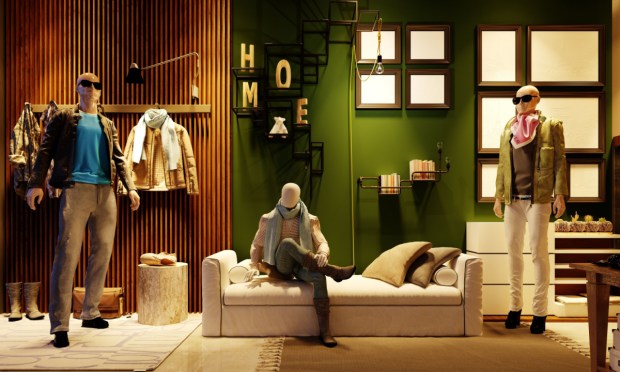
Several direct-to-consumer (D2C) brands, such as apparel brand Madhappy, are taking a detour from the original playbook and stepping into the retail arena to weave closer connections with consumers.
However, its venture into retail doesn’t entail partnering with an existing retailer to leverage their established customer base. Instead, the brand has opted to establish its own flagship operation.
Revealing a 2,800-square-foot establishment in West Hollywood, California, the brand presents an array of its apparel, complemented by an on-site cafe designed to integrate art, fashion and food. Collaborating with the Los Angeles-based creative studio PlayLab, the brand underscores that the flagship goes beyond mere transactions; it’s conceived as a space where customers are invited to invest more than a fleeting moment, encouraging them to linger for hours rather than swiftly browsing for seconds.
With that in mind, Madhappy’s new store highlights exclusive special capsules and accessories, along with a conversation pit, a spacious open-air courtyard, and a multimedia room showcasing creations from a rotating lineup of collaborators who design unique audiovisual experiences.
“From the beginning, physical retail has been essential to Madhappy and its success,” said Peiman Raf, co-founder of Madhappy, in a statement. “We’ve always viewed our shops as spaces that go beyond something purely transactional. We want them to allow our community to engage with Madhappy beyond what’s possible digitally.”
Last week, PYMNTS reported that cookware brand Caraway made the move from direct-to-consumer (D2C) to traditional retail by introducing its products at The Container Store. The full array of Caraway’s pots, pans and bakeware is now available at approximately 80 locations of The Container Store.
The decision to expand into The Container Store came in the wake of the successful debut collaboration, where the duo introduced a cookware set in five stores last year.
Although the brand appears to gain from this choice, the collaboration also brings advantages to the retailer. Specifically, during the initial quarter of fiscal year 2023, The Container Store disclosed consolidated net sales of $207.1 million, reflecting a 21.1% decrease compared to the corresponding period in FY22. As a result, the retailer has purportedly been pursuing a revitalization of its product assortment to draw in customers.
“Considering evolving customer needs, our merchant team evaluated our entire assortment, identified key growth categories that complement the organizing solutions and custom spaces customers are already coming to us for, and have curated an unmatched assortment,” said Stacey Shively, chief merchandising officer at The Container Store at the time of the announcement.
Read more: D2C Brands Favor Retail as Consumers Resist Spending
As PYMNTS reported last week, 40% of consumers see themselves in a tougher financial spot compared to 2022. Among those living paycheck to paycheck (60% of the population), a significant 68% mentioned that their financial circumstances have declined over the past year.
Sixty-two percent of surveyed consumers are concerned about the economic outlook, and 58% see inflation exceeding growth in their paychecks. As the holidays approach, there is uncertainty about spending and financial sources.
“The Paycheck-toPaycheck Report: The Holiday Shopping Deep Dive Edition,” a report by PYMNTS Intelligence and LendingClub, found that 22% of all consumers expect higher spending, mainly due to increased prices.
The implication is that we might not necessarily purchase more items or gifts for our loved ones. At best, the shopping baskets will be comparable to last year, but at a higher cost. Only 26% of consumers indicated that they would increase their spending due to having more available funds.
When it comes to financing holiday expenses, consumers mentioned using options like credit cards for 13% of their holiday spending. In a separate note, over one-third of consumers expressed intentions to dip into their savings to cover some part of their holiday expenditures.
That said, with consumers feeling financial pressure, brands are exploring alternative avenues to reach and tap into different customer bases.
See also: Consumer Sentiment Continues Sliding as Households Brace for Higher Inflation
For Madhappy, it appears that the brand aims to go beyond mere transactional interactions and is focused on providing customers with a more immersive experience.